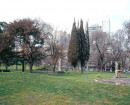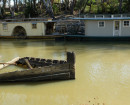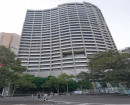MARQUIS OF LINLITHGOW MEMORIAL
ST KILDA ROAD AND GOVERNMENT HOUSE DRIVE AND ANZAC AVENUE MELBOURNE, MELBOURNE CITY
-
Add to tour
You must log in to do that.
-
Share
-
Shortlist place
You must log in to do that.
- Download report
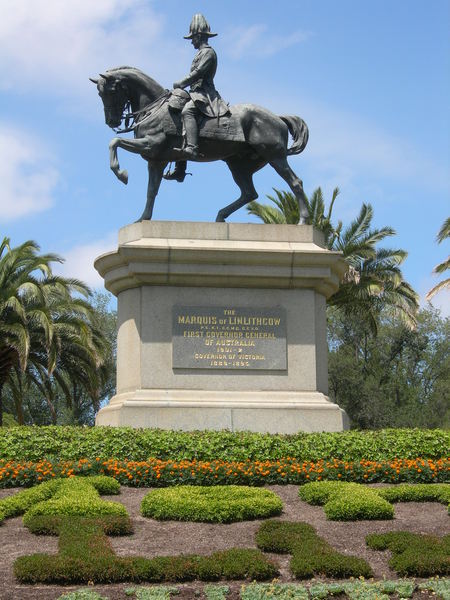

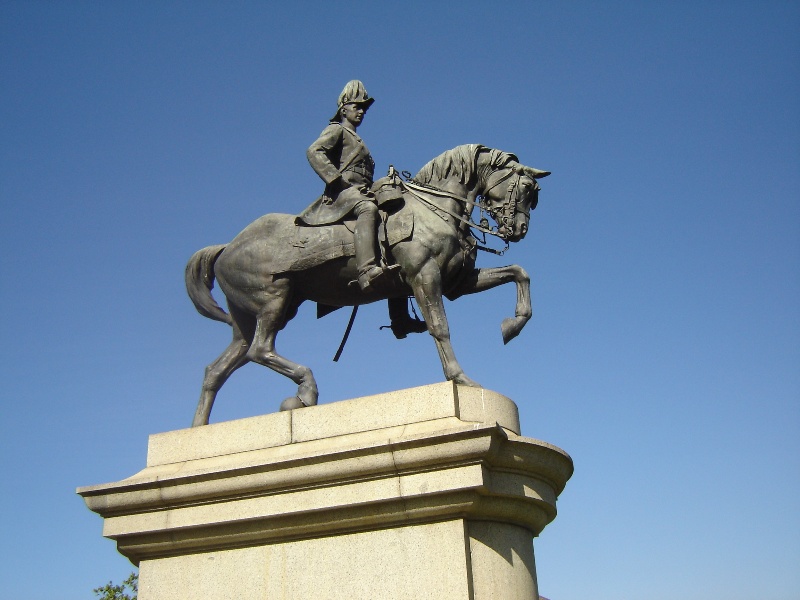
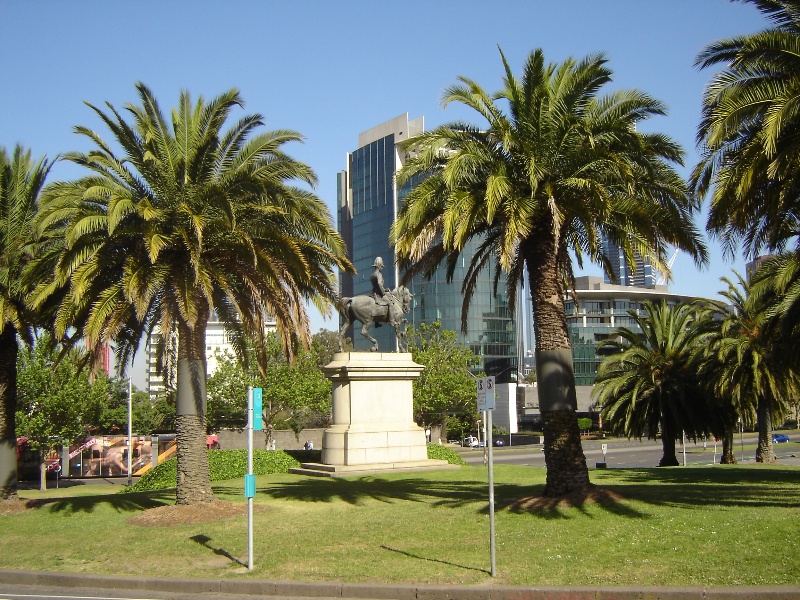
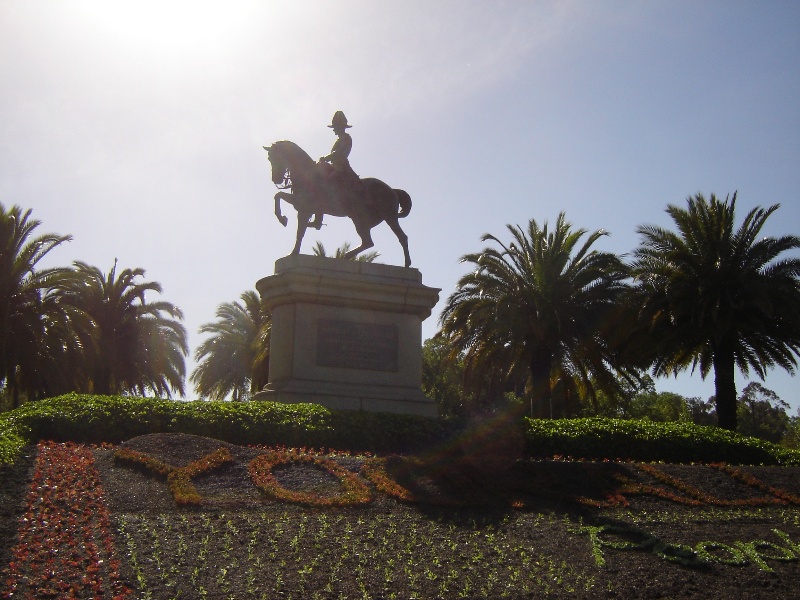
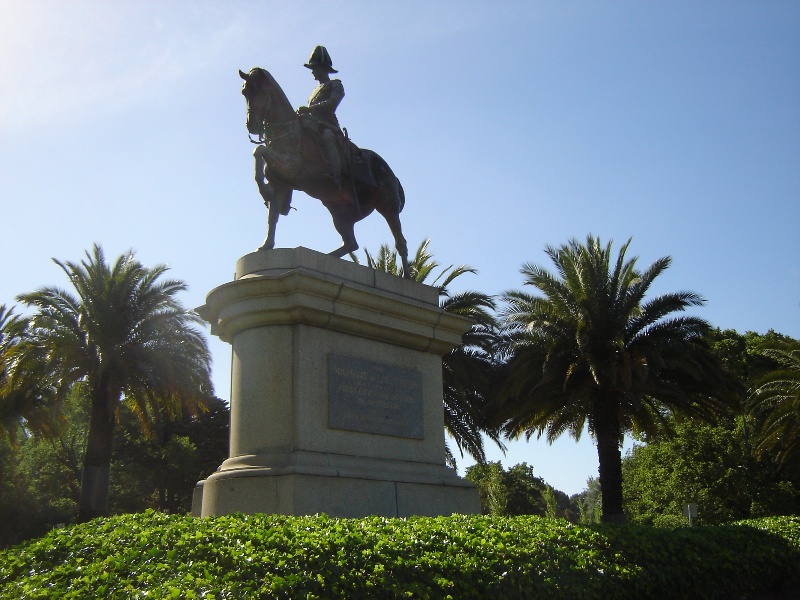
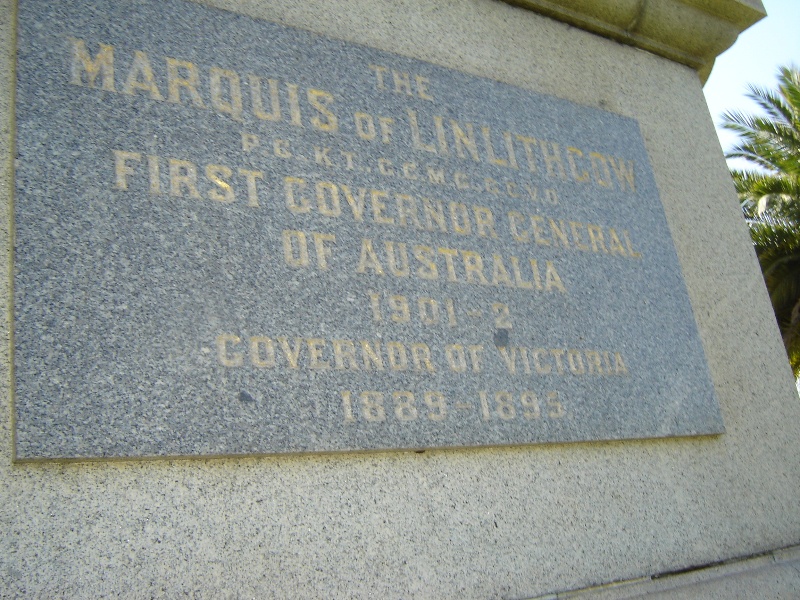

Statement of Significance
What is significant?
The Marquis of Linlithgow Memorial is located on St Kilda Road at the driveway entrance to Government House. The Memorial is located on in the Domain on a triangular site that was reserved under The Marquis of Linlithgow Memorial Site Act 1910.
The Marquis of Linlithgow, John Adrian Louis Hope Hopetoun, the Seventh Earl of Hopetoun (1860-1908) was the Governor of the Colony of Victoria from 1889 to 1895 and the first Governor General of Australia (1901-1903). His appointment as Governor reflected the change in the role of Governor from public servant and administrator in the early years of the colony, to the representative of the constitutional monarchy by the end of the nineteenth century. When Governor of Victoria the Earl of Hopetoun was a popular figure in Victoria making speeches, cutting ribbons, hosting entertainments and visiting rural towns. His years as Governor General were not as successful. He originally asked the Premier of New South Wales (William Lyne) to form the first Commonwealth Government. Lyne did not have popular support and Hopetoun then commissioned Edmund Barton to form government. Later Hopetoun resigned over the refusal of the commonwealth parliament to raise his salary and expense allowance. The title of Marquis of Linlithgow was bestowed after his return to England.
After his death a public meeting was held in Melbourne and it was agreed that a fund be created for the erection of a Statue "which would be a lasting monument to our veneration and regard for the late Lord Linlithgow". A statute would "fittingly record the admiration of everyone for our first Governor General". It was also intended to commemorate the establishment of the Commonwealth.
A committee was formed of many prominent citizens including the Lord Mayor of Melbourne. A call for subscriptions was made to all municipalities, banks, insurance companies, Scottish and Caledonian societies, sporting clubs and ladies societies. Subscription for small amounts usually under ₤5 were received from organisations such as the Nurmukah Caledonian Society and the Commonwealth Ladies Rifle Club. The Committee also organised a competition for the design of the statue. The Committee received ten designs from Australian and British sculptors. W Birnie Rhind, from Scotland, was awarded the commission after agreeing to the overall cost of ₤1500. Rhind was already represented in Australia by his statue of Colonel Light in Adelaide erected in 1905.
The Marquis of Linlithgow memorial is an equestrian portrait in military uniform as Commander in Chief of Australia. The bronze figure of the Marquis has been placed on a substantial classically inspired pedestal made of Harcourt granite. Rhind aimed to provide a "correct likeness" of the Marquis which was approved by his family.
The Marquis of Linlithgow Memorial was unveiled on 16 June 1911.
How is it significant?
The Marquis of Linlithgow Memorial is of historic and aesthetic significance to the state of Victoria.
Why is it significant?
The Marquis of Linlithgow Memorial is of historical importance as a commemoration of the first Governor General of Australia and his role at the time of Federation.
The Marquis of Linlithgow Memorial is of aesthetic significance to the State of Victoria as a part of the beautification of Melbourne with appropriate parks, gardens and memorials.
-
-
MARQUIS OF LINLITHGOW MEMORIAL - History
The Memorial is located on in the Domain on a triangular site that was reserved under The Marquis of Linlithgow Memorial Site Act 1910. This crown land formerly belonged to the State of Victoria and the Act was required to make it the responsibility of Melbourne City Council.
The Marquis of Linlithgow, John Adrian Louis Hope Hopetoun, the Seventh Earl of Hopetoun (1860-1908) was the Governor of the Colony of Victoria from 1889 to 1895 and the first Governor General of Australia (1901-1903). His appointment as Governor reflected the change in the role of Governor from public servant and administrator in the early years of the colony, to the representative of the constitutional monarchy by the end of the nineteenth century. The appointment of minor nobility became the favoured candidates for the Governor General and the positions were sought after in Australia, Canada and New Zealand with India the most prestigious appointment of all. The changes in this role are covered in Cannadine The Decline and Fall of the British Aristocracy pp. 588- 602.
The Earl of Hopetoun was a popular figure in Victoria making speeches, cutting ribbons, hosting entertainments and visiting rural towns. These visits made possible because of the extensive rail network. Alfred Deakin commented after Hopetoun's death that he was very good at making speeches.
Following his success in Victoria Hopetoun was offered the position of the first Governor General of Australia. Hopetoun was reported to have supported Federation and he presided over the inauguration of the Commonwealth in Sydney on January 1 1901. His time as Governor General was not a political success. He originally asked the Premier of New South Wales (William Lyne) to form the first Commonwealth Government. Lyne did not have popular support and Hopetoun then commissioned Edmund Barton to form government. (see La Nauze The Hopetoun Blunder). Hopetoun resigned after only two years over the refusal of the commonwealth parliament to raise his salary and expense allowance. This presented the new nation with difficulty in attracting suitable candidates to the position as the government was seen as parsimonious.
The Marquis of Linlithgow Memorial was unveiled on 16 June 1911 with a military and naval guard of honour and other dignitaries in attendance including the Chief Justice, the acting PM (Billy Hughes) and the Governor. Most particularly Hopetoun's son the 2nd Marquis of Linlithgow and a future Viceroy of India was also in attendance.
MARQUIS OF LINLITHGOW MEMORIAL - Plaque Citation
The Marquis of Linlithgow Memorial was unveiled on 16 June 1911 as a tribute to the first Governor General of Australia. The memorial was designed and sculpted by W. Birnie Rhind of Scotland.
MARQUIS OF LINLITHGOW MEMORIAL - Permit Exemptions
General Exemptions:General exemptions apply to all places and objects included in the Victorian Heritage Register (VHR). General exemptions have been designed to allow everyday activities, maintenance and changes to your property, which don’t harm its cultural heritage significance, to proceed without the need to obtain approvals under the Heritage Act 2017.Places of worship: In some circumstances, you can alter a place of worship to accommodate religious practices without a permit, but you must notify the Executive Director of Heritage Victoria before you start the works or activities at least 20 business days before the works or activities are to commence.Subdivision/consolidation: Permit exemptions exist for some subdivisions and consolidations. If the subdivision or consolidation is in accordance with a planning permit granted under Part 4 of the Planning and Environment Act 1987 and the application for the planning permit was referred to the Executive Director of Heritage Victoria as a determining referral authority, a permit is not required.Specific exemptions may also apply to your registered place or object. If applicable, these are listed below. Specific exemptions are tailored to the conservation and management needs of an individual registered place or object and set out works and activities that are exempt from the requirements of a permit. Specific exemptions prevail if they conflict with general exemptions. Find out more about heritage permit exemptions here.Specific Exemptions:General Conditions: 1. All exempted alterations are to be planned and carried out in a manner which prevents damage to the fabric of the registered place or object. General Conditions: 2. Should it become apparent during further inspection or the carrying out of works that original or previously hidden or inaccessible details of the place or object are revealed which relate to the significance of the place or object, then the exemption covering such works shall cease and Heritage Victoria shall be notified as soon as possible. Note: All archaeological places have the potential to contain significant sub-surface artefacts and other remains. In most cases it will be necessary to obtain approval from the Executive Director, Heritage Victoria before the undertaking any works that have a significant sub-surface component. General Conditions: 3. If there is a conservation policy and plan endorsed by the Executive Director, all works shall be in accordance with it. Note: The existence of a Conservation Management Plan or a Heritage Action Plan endorsed by the Executive Director, Heritage Victoria provides guidance for the management of the heritage values associated with the site. It may not be necessary to obtain a heritage permit for certain works specified in the management plan. General Conditions: 4. Nothing in this determination prevents the Executive Director from amending or rescinding all or any of the permit exemptions. General Conditions: 5. Nothing in this determination exempts owners or their agents from the responsibility to seek relevant planning or building permits from the responsible authorities where applicable. Regular Site Maintenance : The following site maintenance works are permit exempt under section 66 of the Heritage Act 1995: a) regular site maintenance provided the works do not involve the removal or destruction of any significant above-ground features or sub-surface archaeological artefacts or deposits; b) the maintenance of an item to retain its conditions or operation without the removal of or damage to the existing fabric or the introduction of new materials; c) cleaning including the removal of surface deposits, organic growths, or graffiti by the use of low pressure water and natural detergents and mild brushing and scrubbing; d) repairs, conservation and maintenance to plaques,roads and paths, fences and gates and drainage and irrigation. e) the replacement of existing services such as cabling, plumbing, wiring and fire services that uses existing routes, conduits or voids, and does not involve damage to or the removal of significant fabric. Note: Surface patina which has developed on the fabric may be an important part of the item's significance and if so needs to be preserved during maintenance and cleaning. Note: Any new materials used for repair must not exacerbate the decay of existing fabric due to chemical incompatibility, obscure existing fabric or limit access to existing fabric for future maintenance. Repair must maximise protection and retention of fabric and include the conservation of existing details or elements. Weed and Vermin Control : The following weed and vermin control activities are permit exempt under section 66 of the Heritage Act 1995, a) Weed and vermin control activities provided the works do not involve the removal or destruction of any significant above-ground features or sub-surface archaeological artefacts or deposits; Note: Particular care must be taken with weed and vermin control works where such activities may have a detrimental affect on the significant fabric of a place. Such works may include the removal of ivy, moss or lichen from an historic structure or feature. Landscape Maintenance : The following landscape maintenance works are permit exempt under section 66 of the Heritage Act 1995, a) landscape maintenance works provided the activities do not involve the removal or destruction of any significant above-ground features or sub-surface archaeological artefacts or deposits; b) watering, mowing, top-dressing and fertilising necessary for the continued health of plants, without damage or major alterations to layout, contours, plant species or other significant landscape features. Public Safety and Security : The following public safety and security activities are permit exempt under section 66 of the Heritage Act 1995, a) public safety and security activities provided the works do not involve the removal or destruction of any significant above-ground structures or sub-surface archaeological artefacts or deposits; b) the erection of temporary security fencing, scaffolding, hoardings or surveillance systems to prevent unauthorised access or secure public safety which will not adversely affect significant fabric of the place including archaeological features; c) development including emergency stabilisation necessary to secure safety where a site feature has been irreparably damaged or destabilised and represents a safety risk to its users or the public. Note: Urgent or emergency site works are to be undertaken by an appropriately qualified specialist such as a structural engineer, or other heritage professional. Signage and Site Interpretation : The following Signage and Site Interpretation activities are permit exempt under section 66 of the Heritage Act 1995, a) signage and site interpretation activities provided the works do not involve the removal or destruction of any significant above-ground structures or sub-surface archaeological artefacts or deposits; b) the erection of non-illuminated signage for the purpose of ensuring public safety or to assist in the interpretation of the heritage significance of the place or object and which will not adversely affect significant fabric including landscape or archaeological features of the place or obstruct significant views of and from heritage values or items; c) signage and site interpretation products must be located and be of a suitable size so as not to obscure or damage significant fabric of the place; d) signage and site interpretation products must be able to be later removed without causing damage to the significant fabric of the place; Note: The development of signage and site interpretation products must be consistent in the use of format, text, logos, themes and other display materials. Note: Where possible, the signage and interpretation material should be consistent with other schemes developed on similar or associated sites. It may be necessary to consult with land managers and other stakeholders concerning existing schemes and strategies for signage and site interpretation.MARQUIS OF LINLITHGOW MEMORIAL - Permit Exemption Policy
It is the purpose of the permit exemptions to enable routine maintenance and repairs which do not damage the significant fabric of the place, or diminish its cultural significance.
-
-
-
-
-
SHRINE OF REMEMBRANCE
 Victorian Heritage Register H0848
Victorian Heritage Register H0848 -
FORMER KELLOW FALKINER SHOWROOMS
 Victorian Heritage Register H0668
Victorian Heritage Register H0668 -
PRINCES WALK VAULTS
 Victorian Heritage Register H0646
Victorian Heritage Register H0646
-
'NORWAY'
 Boroondara City
Boroondara City -
1 Mitchell Street
 Yarra City
Yarra City
-
-






